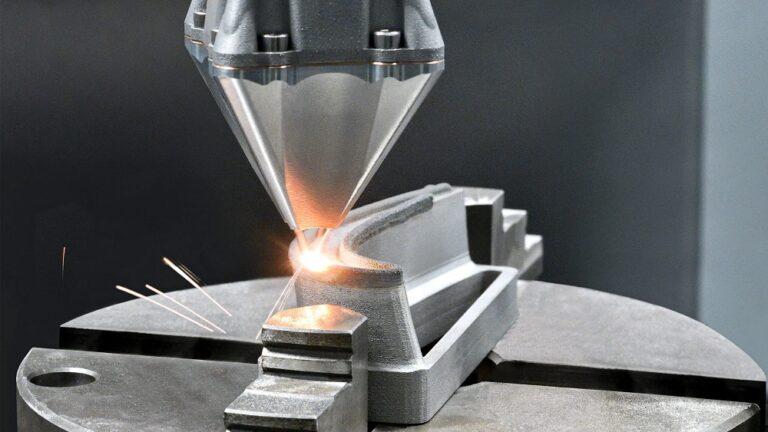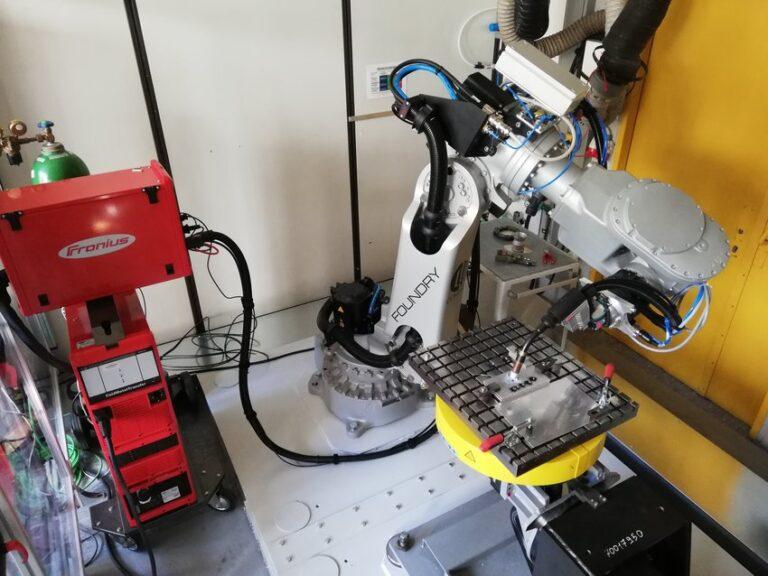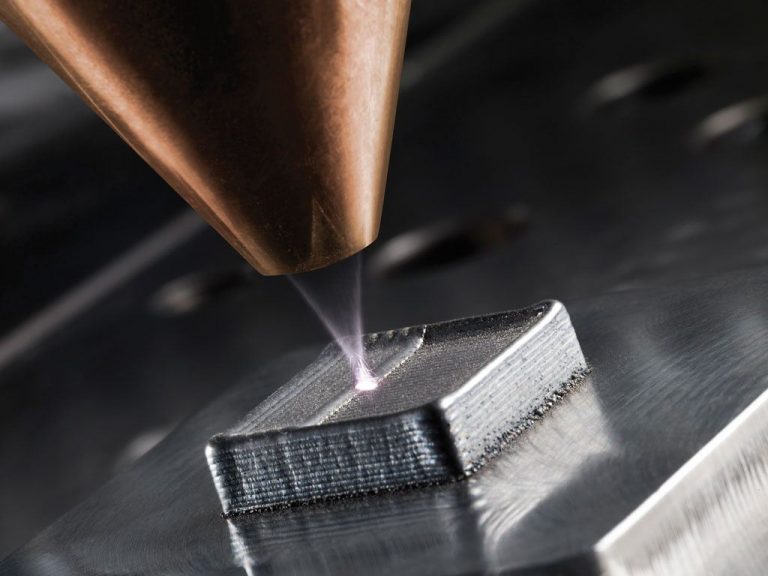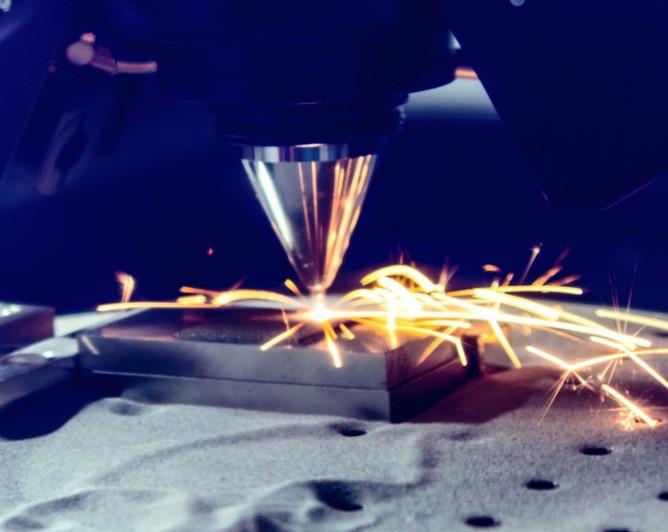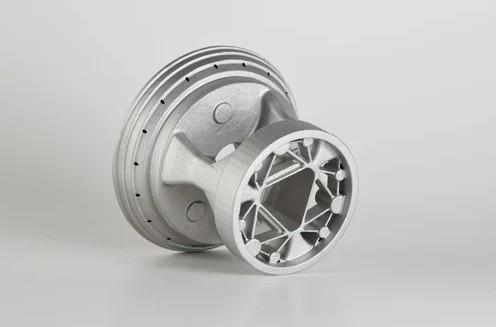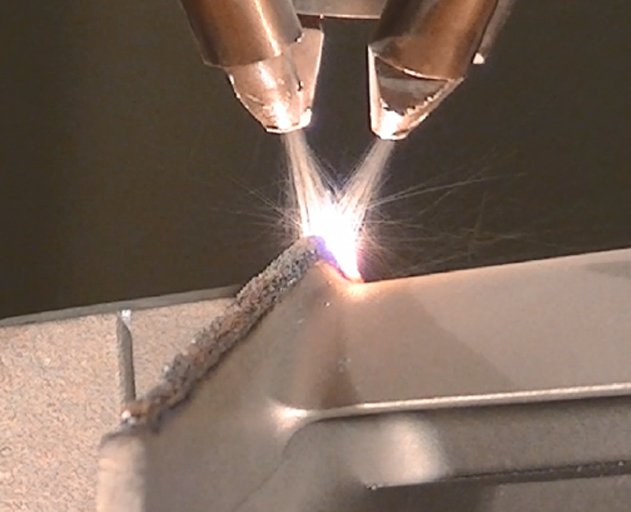Optimizing Directed Energy Deposition Additive Manufacturing: Techniques and Strategies
Introduction to Directed Energy Deposition Additive Manufacturing
Directed Energy Deposition Additive Manufacturing (DED AM) is a manufacturing process that uses focused energy sources, such as lasers or electron beams, to deposit material onto a substrate, layer by layer, to create a 3D object. This process allows for the creation of complex geometries that would be difficult or impossible to produce with traditional manufacturing methods.
DED AM has benefits over traditional methods. It allows customization and uses various materials. Additionally, DED AM can be used for the repair and refurbishment of existing parts, which can save time and money.
DED AM can be bettered through optimization. It enhances efficiency, quality, and cost-effectiveness. Optimization can be done in process parameters, materials, and design. Monitoring and control methods can also help. DED AM is a useful tech. It can change how we make and fix parts. More research can optimize it. It will lead to more progress.
What is Directed Energy Deposition Additive Manufacturing?
DED AM is advanced tech. It uses energy sources. Examples are lasers or electron beams. The energy sources deposit material. The material creates a 3D object. It happens layer by layer. This process is highly precise and allows for the creation of complex geometries and parts with customized designs.
DED AM allows manufacturers to use a variety of materials, including metals, polymers, and ceramics, making it a versatile manufacturing process. The process initiates with creating a 3D computer-aided design (CAD) model of the desired part. Next, the model transforms into a series of 2D cross-sectional slices that guide the energy source during material deposition onto the substrate.
In DED AM, the energy source melts or vaporizes the material as it deposits it, fusing it with the previously deposited layers. The process repeats layer by layer until the desired part is complete. Furthermore, DED AM can repair and refurbish existing parts. DED AM can make complex parts. Traditional methods can’t do this. DED AM can use multiple materials. This is good for specific properties.
In conclusion, DED AM is an exciting and rapidly advancing manufacturing technology that has the potential to revolutionize the way we create and repair parts. With ongoing research and development, DED AM will continue to improve, leading to even greater advancements in this exciting field.
Applications and Benefits of Directed Energy Deposition Additive Manufacturing
Directed Energy Deposition Additive Manufacturing (DED AM) has many applications and benefits, making it a versatile and increasingly popular manufacturing technology. DED AM can be used in a variety of industries, including aerospace, automotive, medical, and more. In this section, we will explore some of the key applications and benefits of DED AM.
One of the main applications of DED AM is the production of complex and customized parts. DED AM makes complex parts possible. Traditional methods cannot create intricate geometries or internal features. Turbine blades and engine parts benefit from DED AM.
In the aerospace and medical industries, where components may need repair instead of replacement, DED AM can be used to repair and refurbish existing parts. DED AM allows for minimal material waste and maximum accuracy in repairing parts.
Another benefit of DED AM is its ability to use a wide range of materials. DED AM can be used with metals, polymers, and ceramics, among other materials. This versatility allows for the creation of parts with specific mechanical or physical properties, such as high strength or heat resistance.
DED AM can also be used to reduce lead times and costs. With DED AM, parts can be produced quickly and efficiently, reducing production time and costs. Additionally, the ability to produce parts with minimal material waste can further reduce costs.
In conclusion, DED AM is an advanced manufacturing technology with many applications and benefits. DED AM is versatile for complex parts and repair. It has ongoing research and development. It will expand its applications and benefits. Advancements in DED AM are promising.
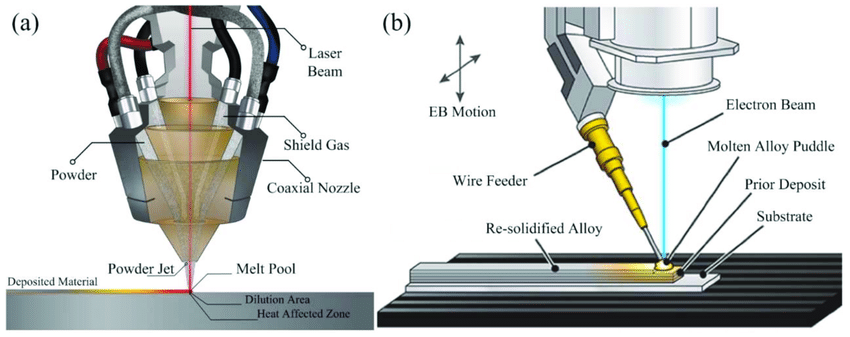
Understanding the Optimization of Directed Energy Deposition Additive Manufacturing
Directed Energy Deposition Additive Manufacturing (DED AM) is a complex process that requires optimization to achieve maximum efficiency, quality, and cost-effectiveness. Understanding the optimization of DED AM involves considering factors such as process parameters, materials, design, and process monitoring and control.
Optimizing process parameters involves identifying and adjusting factors such as laser power, scanning speed, powder flow rate, and layer thickness. These factors can significantly impact the quality and efficiency of the process, and adjusting them appropriately can lead to improved results.
Choose materials for desired properties. Optimize material use. Consider geometry and features. Adjust design for best printing. Ensure optimal part quality.
Process monitoring and control involve using sensors and monitoring techniques to ensure that the printing process is proceeding as planned. This can include monitoring factors such as temperature, pressure, and material flow rate, and adjusting the process as necessary to maintain optimal conditions.
In conclusion, optimizing the DED AM process involves careful consideration of process parameters, materials, design, and process monitoring and control. By understanding and optimizing these factors, it is possible to achieve maximum efficiency, quality, and cost-effectiveness in the production of complex and customized parts.
Why is optimization important?
DED AM optimization is important for quality, efficacy, and cost. Change process variables to optimize DED AM. Change process parameters, materials, design, and monitoring to get the best outcomes.
The potential for increased part quality is one of the key justifications for the significance of optimization. It is possible to produce parts with better mechanical or physical attributes, such as increased strength, durability, or heat resistance, by altering process settings, materials, and design. This is crucial for sectors like aerospace and medicine where parts have to adhere to tight performance and safety requirements.
Increased manufacturing process efficiency can result from optimization. Process parameter optimization can decrease the time and resources needed to make parts, ultimately lowering manufacturing costs. It is also possible to identify problems and make corrections in real-time utilizing process monitoring and control systems, which lowers the probability of mistakes or faults.
Additionally, optimization can increase the DED AM process’ adaptability. The DED AM method is more flexible and adaptable to many applications and industries since it is possible to make parts with a wide range of mechanical or physical qualities by optimizing materials and design.
Optimization is important in DED AM. It results in better component quality. This optimazation process makes the manufacturing process effective. It ensures the adaptability of the manufacturing process. Optimizing process variables, materials, and design produces complicated parts. It produces bespoke parts with high efficiency, quality, and economy.
Factors Affecting the Optimization of Directed Energy Deposition Additive Manufacturing
In order to attain optimum efficiency, quality, and cost-effectiveness, Directed Energy Deposition Additive Manufacturing (DED AM) is a complex process that needs careful optimization. The DED AM process can be optimized by a number of parameters, including:
- Process parameters: Variables such as laser power, scanning speed, powder flow rate, and layer thickness can greatly impact the quality and effectiveness of the process.
- Materials: The choice and optimization of the materials might impact the printed part’s mechanical or physical characteristics, such as its tensile strength, heat resistance, or durability.
- Design: The geometry and internal characteristics of the part might affect the printing environment and the printed part’s quality.
- Process control and monitoring: By keeping an eye on variables like temperature, pressure, and material flow rate, sensors and monitoring systems can help ensure that the printing process is going according to schedule.
- Post-processing: The employment of post-processing methods can further improve the mechanical or physical qualities of the printed object. Post-processing methods include machining, heat treatment, and surface finishing.
Optimizing DED AM involves many factors: parameters, materials, design, monitoring, and post-processing. By optimizing these factors, you can produce complex parts efficiently, with high quality and cost-effectiveness.
Techniques for Optimizing Directed Energy Deposition Additive Manufacturing
To achieve optimal efficiency, quality, and cost-effectiveness, Directed Energy Deposition Additive Manufacturing (DED AM) is a complex process that needs careful tuning. The DED AM procedure can be optimized using a variety of methods, such as:
Design optimization
Design optimization is crucial in Directed Energy Deposition Additive Manufacturing. Topology, lattice structures, and generative design techniques improve the part’s design. Optimizing the design results in improved printing parameters, less material waste, and better part performance. Topology optimization uses mathematical algorithms to optimize material distribution for strength and lightweight design. Lattice structures are lightweight and offer improved mechanical properties due to their unique geometry. Generative design is a process that uses artificial intelligence to generate multiple design options that meet specific criteria. By utilizing these techniques, the design can be optimized to improve the performance of the printed part and reduce manufacturing costs.
Process parameters optimization
Process parameter optimization is critical in additive manufacturing. It ensures desired printing quality and efficiency. Adjusting laser power, scanning speed, powder flow rate, and layer thickness can optimize printing conditions. The design of experiments and response surface methodology can determine optimal process parameters. To maintain the printing conditions during the process, one can also use in-situ monitoring and control techniques. Ultimately, process parameter optimization is a key factor in achieving the desired printing results for directed energy deposition additive manufacturing.
Materials optimization
Directed Energy Deposition Additive Manufacturing can be improved by carefully choosing and optimizing materials. It is possible to enhance the printed part’s mechanical or physical qualities by carefully choosing and optimizing the materials. Utilizing materials with particular qualities, for instance, can improve the materials’ strength, durability, and heat resistance. Optimizing ingredients improves print quality. Powder particle size affects quality. Testing and analysis help optimize the process. Material accessibility and price are important. Consider these factors when choosing materials.
Process monitoring and control
Directed Energy Deposition Additive Manufacturing process optimization requires close attention to process monitoring and control. By monitoring variables like temperature, pressure, and material flow rate, sensors and monitoring tools can make sure that the printing process is going according to schedule. One can use this information to control the printing process precisely by adjusting the process parameters in real-time. Furthermore, monitoring the process can help identify potential issues before they become major problems, enabling quick action and the prevention of any defects in the printed parts. Overall, process control and monitoring are crucial methods for Directed Energy Deposition Additive Manufacturing to provide consistent, high-quality outcomes.
post-processing methods
Post-processing techniques can significantly impact the final properties of a printed part. Machining refines shape by removing excess material. Heat treatment improves strength and durability. Surface finishing improves the appearance and adds functionality. Examples of functionality: corrosion resistance, and electrical conductivity.
In post-processing optimization, it is important to consider the compatibility of the techniques with the specific materials used in the printing process. For example, certain materials may not be able to withstand high temperatures or harsh chemical treatments, limiting the post-processing options. Furthermore, you should select post-processing techniques based on the intended application of the printed part, as different applications may require different properties.
Another factor to consider is the cost and time required for post-processing. Some techniques, such as machining, can be time-consuming and may add significant cost to the production process. Therefore, it is important to balance the benefits of post-processing with the cost and time constraints of the overall manufacturing process.
Overall, post-processing optimization is an important consideration in Directed Energy Deposition Additive Manufacturing, as it can greatly enhance the properties and functionality of the printed parts. By selecting and applying appropriate post-processing techniques, manufacturers can produce high-quality parts that meet the specific requirements of their applications.
In conclusion, there are a number of strategies to take into account when trying to optimize the DED AM process, including design optimization, process parameter optimization, material selection, and optimization, process monitoring and control, and post-processing optimization. We can use these methods to produce complicated and bespoke parts with the highest levels of efficiency, quality, and cost-effectiveness.
Case Studies: Examples of Optimized Directed Energy Deposition Additive Manufacturing
Practical examples demonstrate how various industries have optimized directed energy deposition additive manufacturing. The aerospace industry, for instance, prints parts like turbine blades using titanium alloy powders. By optimizing the process parameters, including laser power and scanning speed, the parts have shown improved mechanical properties and are able to withstand high temperatures.
The medical industry, for example, prints implants like hip replacements using biocompatible materials such as titanium and cobalt-chromium alloys. By using process monitoring and control techniques, the parts have shown improved dimensional accuracy and surface finish, reducing the need for post-processing.
The automotive industry has optimized directed energy deposition additive manufacturing for producing high-performance engine components, such as pistons and cylinder heads. By selecting and optimizing the material properties and using post-processing techniques such as heat treatment, the parts have shown improved mechanical properties and durability.
Overall, these case studies demonstrate the effectiveness of using directed energy deposition additive manufacturing for various industries and the importance of optimizing the process parameters, material selection, and post-processing techniques for achieving the desired mechanical and physical properties in the final product.
Conclusion
To sum up, directed energy deposition additive manufacturing is a promising technology with numerous potential applications in numerous industries. Using a variety of optimization tactics, such as material selection, process monitoring and control, parameter optimization, and post-processing, can enhance the mechanical and physical qualities of printed parts. The significance of comprehending the core concepts underlying the technology and the necessity of ongoing research and development to further refine the procedure are two major lessons from this essay.
Future optimization of directed energy deposition additive manufacturing could involve the creation of new materials, the incorporation of machine learning and artificial intelligence, and the investigation of novel design paradigms, among other possibilities. To ensure the success of the technology as it develops further, it is crucial for researchers and business professionals to work together and share knowledge.
It is crucial for businesses to engage in R&D, and it is equally crucial for individuals to keep learning and staying abreast of technological breakthroughs in order to promote further improvement in the sector. By doing this, we can fully realize the advantages of directed energy deposition additive manufacturing and open the door to a future of production that is both efficient and sustainable.
How to select the best materials for directed energy deposition additive manufacturing?
- Define your requirements
The first step in selecting the best materials is to define your requirements for the printed part. This could include factors such as strength, durability, heat resistance, and conductivity.
- Research available materials
Once you have defined your requirements, research the materials that are available for directed energy deposition additive manufacturing. Consider the physical and mechanical properties of each material, as well as the cost and availability.
- Evaluate material compatibility
After you have narrowed down your list of potential materials, evaluate their compatibility with the directed energy deposition additive manufacturing process. Some materials may not be suitable for this process due to factors such as melting point or thermal expansion.
- Test material properties
Once you have identified the materials that are compatible with the process, test their properties to determine which material will best meet your requirements. This may include conducting tensile tests, impact tests, or thermal conductivity tests.
- Optimize printing parameters
Once you have selected the material that best meets your requirements, optimize the printing parameters to ensure that the printed part has the desired physical and mechanical properties. This may include adjusting parameters such as laser power, scan speed, and material feed rate.
- Post-processing
Finally, consider post-processing techniques such as machining, heat treatment, or surface finishing to further enhance the mechanical or physical properties of the printed part.
FAQs
In directed energy deposition additive manufacturing, we use a focused energy source like a laser or electron beam to melt and fuse materials, creating a three-dimensional object.
Directed energy deposition additive manufacturing offers several benefits, including the ability to create complex geometries, reduce waste and lead times, and produce customized parts with improved mechanical properties.
In directed energy deposition additive manufacturing, you can use a wide range of materials such as metals, alloys, ceramics, and composites.
To select the best materials for directed energy deposition additive manufacturing, one should consider factors such as the required mechanical and physical properties of the part, the compatibility of the material with the deposition process, as well as the cost and availability of the material.
Depending on the equipment and materials used, manufacturers can use directed energy deposition additive manufacturing for both small-scale and large-scale production. Industries such as aerospace, automotive, and medical device manufacturing commonly use this technology.

